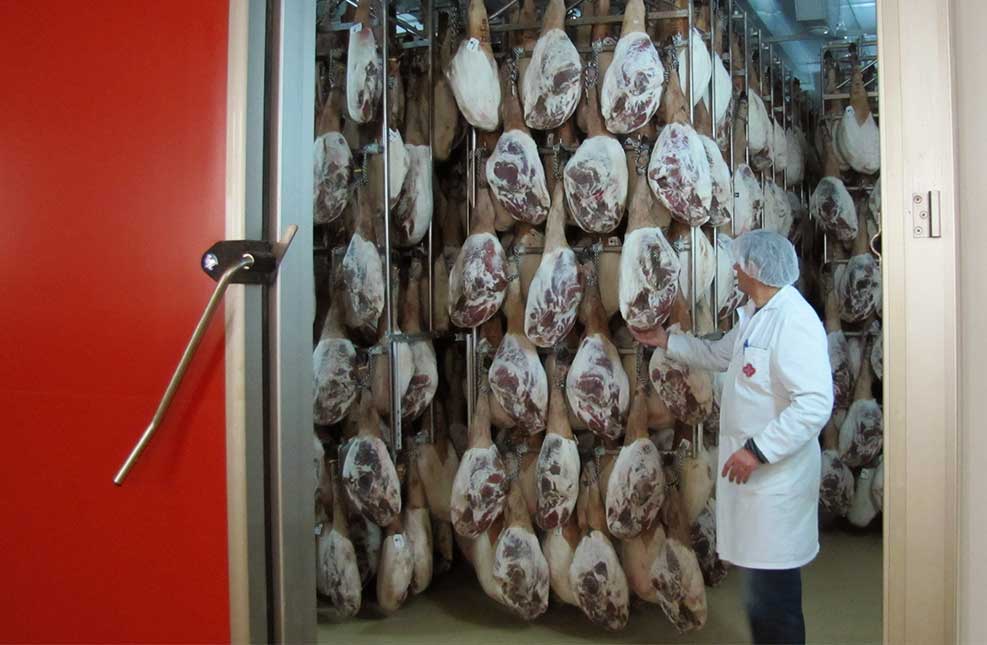
Why are the hams hanging?
One of the most important moments in the process of curing Iberian ham is when it is hung, and its purpose varies depending on the stage of curing we are in. If you want to know why ham is hung at each stage, we will explain it to you in detail.
You'll become an expert!
Why Is Ham Hung During the Drying Stage?
Drying is the third stage of the curing process. It lasts for about six months and takes place after the hams have been salted and washed. This phase consists of two moments. In the past, it was done in lofts or rooms with windows that were opened or closed depending on the weather or time of day and served as natural drying areas.
While in some regions of Spain, this is still done this way, nowadays, this process is mainly carried out in automated spaces:
First Phase
The first part of drying involves hanging the hams at a temperature between 6 and 16 degrees Celsius and a humidity level between 60% and 80%.
Second Phase
During the second stage, the temperature rises slightly and should range between 16 and 30°C, while humidity remains more or less within the same percentages.The goal of drying is to ensure that the hams retain all their aroma, and although they used to be hung by the hoof or shank with ropes, it is now done using so-called aerial hangers.
It's important to handle the pieces as little as possible; the only thing that needs to be done is to monitor the conditions of light, temperature, and humidity, which are currently automated. Supervision is much easier, and control is enhanced. The hangers rotate to ensure that all hams receive equal airflow.
 A master ham cutter checking the ham drying process
A master ham cutter checking the ham drying process
What About During Maturation and Aging?
This is the final stage of ham production. The hams are hung in cellars for a period ranging from six to thirty months. The duration varies depending on whether it's a Gran Reserva ham, a bait ham, or an acorn-fed ham.
This time, you need to pay a bit more attention to each ham. The goal is to continue developing the nuances and curing each one to perfection. Our "cooks," as we like to call our artisans at Enrique Tomás, supervise each ham and grease the areas that could spoil. This protects each piece and ensures uniform curing.
During this entire stage, the hams are also hung on hangers, but unlike the drying stage, they need to be moved now. Over these months, they can accumulate mold, which is actually beneficial as it imparts additional aromas to the ham!
So, why are hams hung? Placing them in this position allows for proper ventilation and curing, ensuring a delicious end result! Once all this work is done, the hams will be ready and sent to stores for you to purchase and enjoy at home.
As you've probably noticed before, all this effort pays off!





